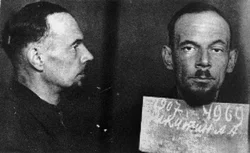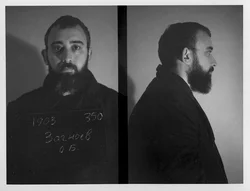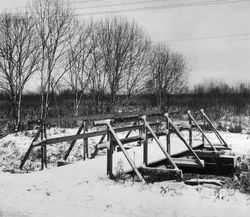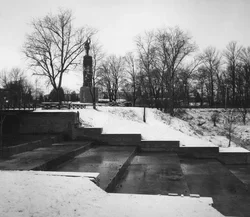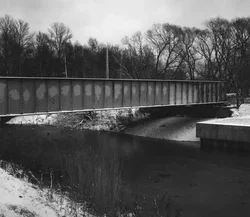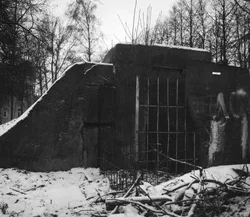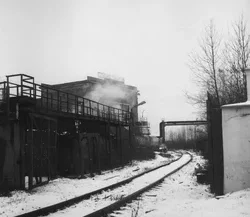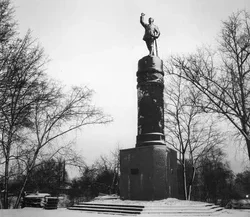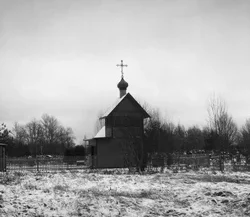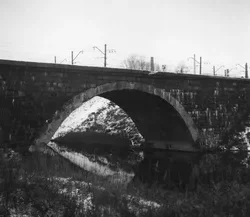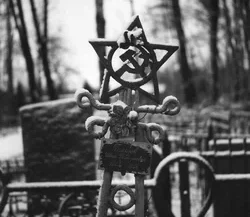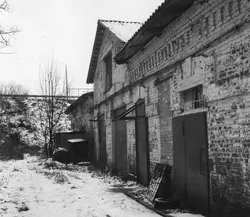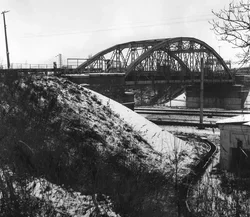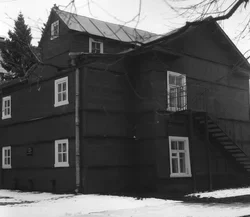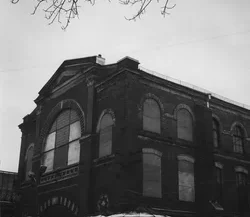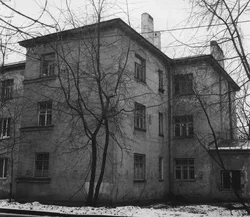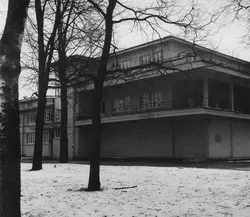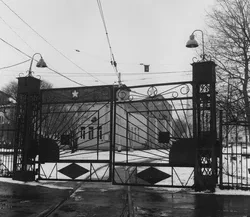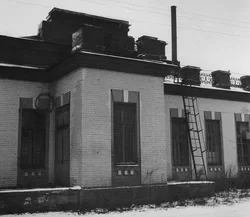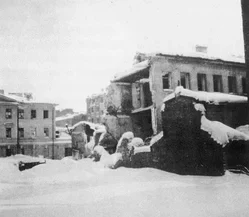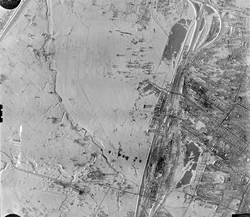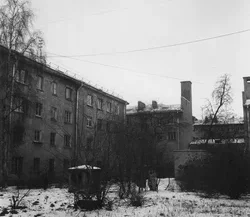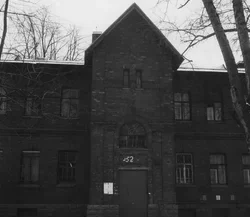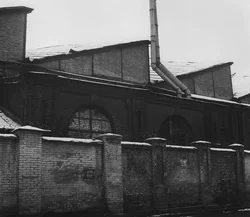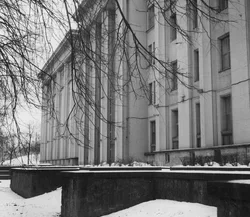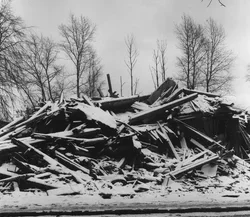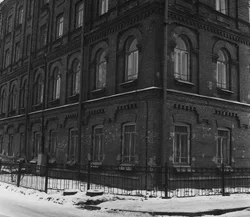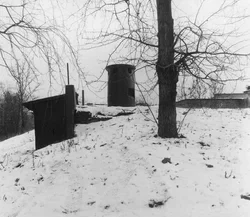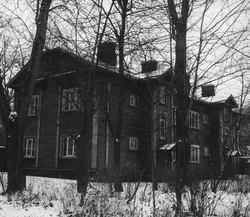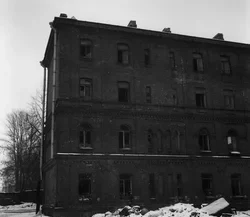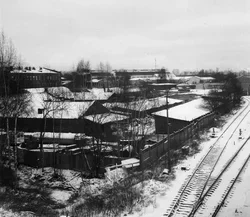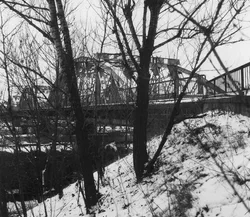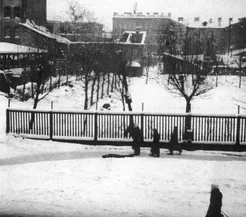ABOUT THE EXHIBITION
The Map and Territory project was first shown in early 2014 at Triumph Gallery in Moscow, shortly before the first salvos of the Russian-Ukrainian war. The project turned out to be multicomponent and in the following years it was modified, “branched off” and presented in different fragments under other titles, in particular, Surface of Writing (with Alina Belishkina, in the Vertical Gallery, set up in an empty elevator shaft at a former factory in St. Petersburg) and Ban on Image as part of the group exhibition Silent Voices (curated by Ludmila Belova) at the St. Petersburg History Museum in the Peter and Paul Fortress and at Peace Square Museum in Krasnoyarsk. A proposal to show it at Moscow’s Gulag Museum in 2017 was met with a surprisingly politically outspoken public refusal, which you can read more about here.
The idea of the project came to me thanks to a large book of archival photographs taken during the 1941-44 Nazi siege of Leningrad and titled Disguised Blockade. Leningrad 1941-1944. It was edited by historian of photography Vladimir Nikitin (1944-2015) and published by Limbus Press in St. Petersburg in 2002. Personal conversations with Mr Nikitin also largely contributed to the project. Nikitin told me how he obtained the police file of his namesake, the amateur photographer Alexander Nikitin (1907-1942), from the secret police NKVD-KGB archives—it was still relatively easy at the time—for research. Alexander Nikitin was arrested for taking photographs in besieged Leningrad without permission and died in prison in 1942. He paid with his life for his natural desire to be a witness to history. In the 1950s, he was posthumously rehabilitated by a Soviet court as a victim of political repression.
The map and territory metaphor is a comparison of image and reality, an attempt to answer the question of how much an image corresponds to reality and how much it distorts it, deliberately or due to some natural reasons.
The main idea of the Map and Territory project is how to regard the grand historical narratives and documents, especially visual ones, how to perceive history in an authoritarian country, when evidence is fabricated, ‘documents’ faked, and their production and distribution meticulously censored? How a bureaucratic prohibition of testimony impacts the image of a historical event? To reflect on these questions, I attempted, in the very first version of the project, to highlight some of the methods that shaped the Soviet historical narrative about the Nazi siege of Leningrad by mixing fiction, half-truths, and seemingly real facts. I decided to take on and at least remotely feel the role of an amateur photographer in a besieged city and set out, in the winter of 2013-2014, to shoot ‘strategic facilities’ in Leningrad. I mimicked the format of Alexander Nikitin’s photographs and chose a time of year similar to that captured in his three surviving photographs. I photographed only what existed in 1941, and for this purpose I used high-resolution German aerial imagery that I had found in a US web archive and taken around the same time when Nikitin was arrested and tried, that is, in the winter of 1941-42. I have to say that when you even imagine yourself in the place of a person violating the authoritarian prohibition to take pictures (and taking pictures during Soviet era was often dangerous, even in peacetime), your feelings and your perspective change, to put it mildly.
F11 showcases the resulting images with links to that German aerial imagery as well as Alexander Nikitin’s own photographs, for which he was arrested. You will also see a photo of Nikitin from his police file (taken from the above-mentioned book Disguised Blockade) and my mocumentary ‘self-portrait’, as if illustrating the famous statement by the founder of the Soviet secret police Dzerzhinsky: “if you aren’t yet in jail, it’s our underperformance and not your accomplishment”.
Max Sher
ABOUT THE AUTHOR
Max Sher (b. 1975, St. Petersburg) is a photographer and visual artist currently based in Berlin.
Soon after settling in the German capital in September 2021, he embarked on a long-term photographic project titled Internal Colonization, in which he explores—with photography and writing—the traces and present-day aspects of colonialism within Europe, including former European possessions of the Russian Empire. Before moving to Berlin, Sher was primarily interested in de-exoticizing the representation of post-Soviet built environment and infrastructure, as well as in investigating local/problematic histories.
Sher's work has been exhibited as part of solo and group shows at the Triumph Gallery, Calvert22 Gallery, Mead Gallery, Moscow Museum of Modern Art, New Tretyakov Gallery, Shchusev Museum of Architecture, Yeltsin Center, Metenkov House of Photography, PERMM Museum of Contemporary Art, etc.
Max Sher’s photobooks include "A Remote Barely Audible Evening Waltz" (Treemedia Publishers, 2013), "Palimpsests" (Ad Marginem Press, 2018), "245 Khrushchev Housing Entrances" (self-published, 2019), and "INFRASTRUCTURES", a joint project with Sergey Novikov published in 2019 under their own micropublishing brand recurrentBooks.

